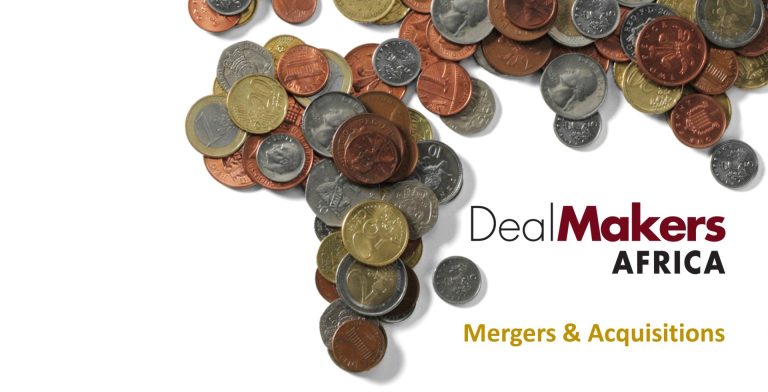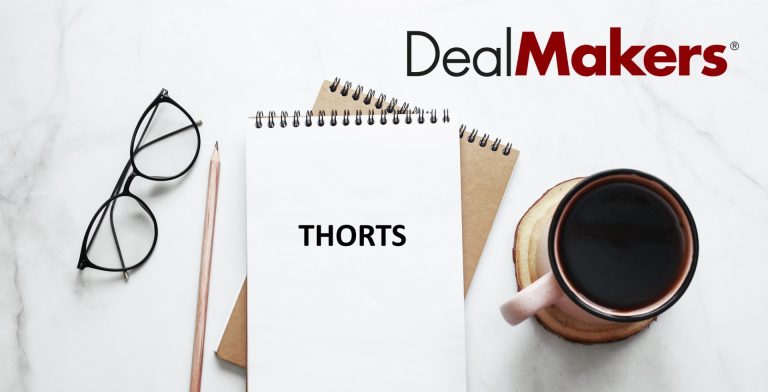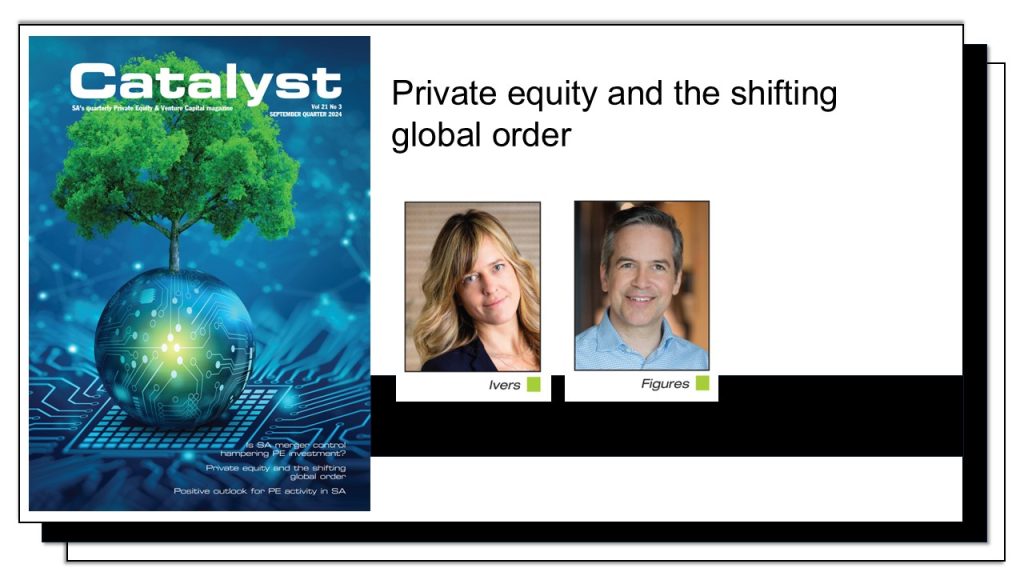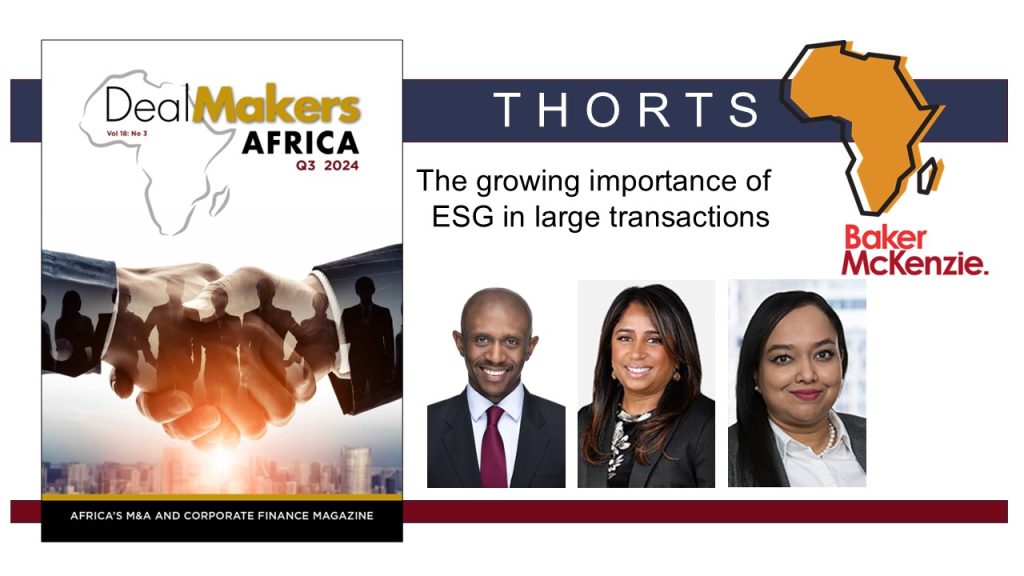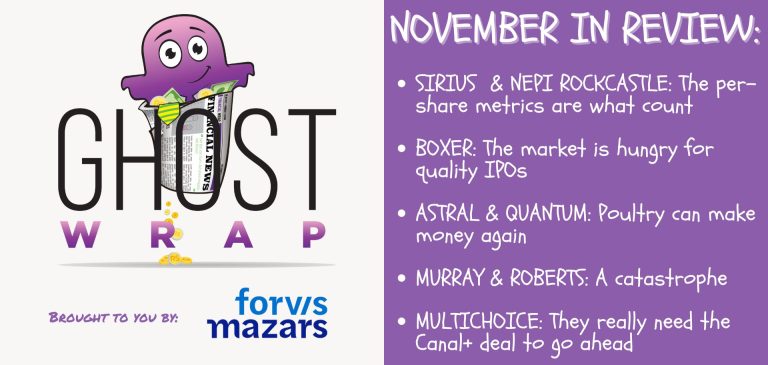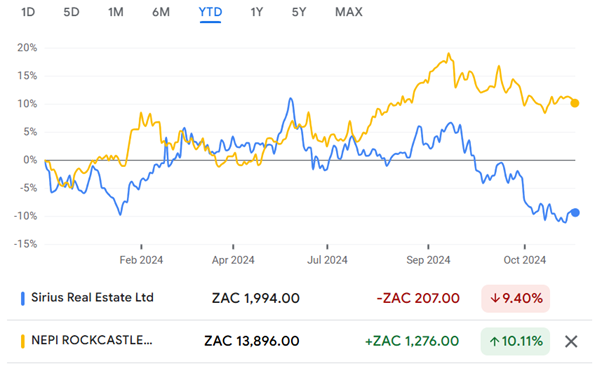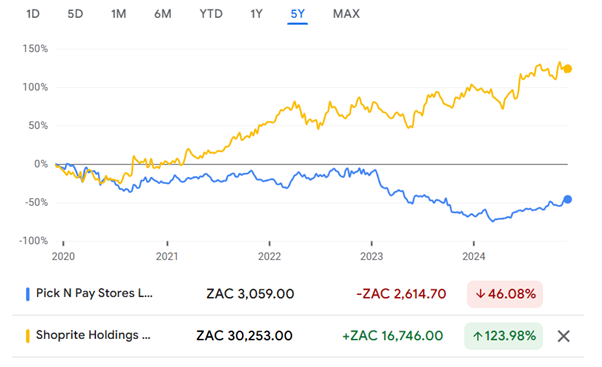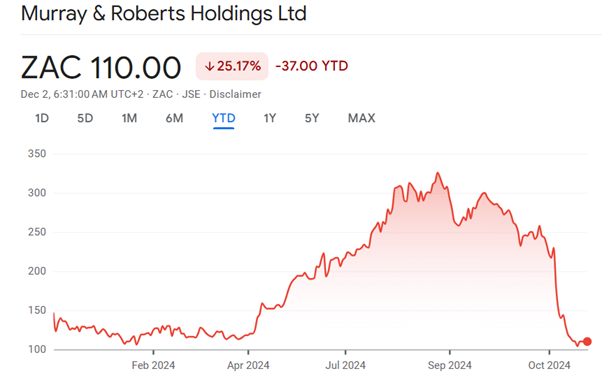Listen to the show using this podcast player:
Raising equity funding is not easy for small businesses in South Africa, but thankfully the Mineworkers Investment Company’s (MIC) Khulisani Ventures initiative is an early-stage funding vehicle that provides capital for businesses that are ready to aggressively grow.
If you are a Black-Owned business in South Africa and you meet the criteria for this investment, then listen carefully to this podcast because your application needs to be in by the end of January 2025. This whole thing will be wrapped up just a couple of months later, with funds expected to flow by March 2025.
If this sounds interesting to you, check out the website for more information and to apply for investment. This podcast is brought to you by I Am an Entrepreneur and the Mineworkers Investment Company, represented on this podcast by Keitumetse Lekaba and Nchaupe Khaole respectively.
Full transcript:
Introduction: Raising equity funding is not easy for small businesses in South Africa, but thankfully the Mineworkers Investment Company’s Khulisani Ventures initiative is an early-stage funding vehicle that provides capital for businesses that are ready to aggressively grow. If you are a Black-Owned business in South Africa and you meet the criteria for this investment, then listen carefully to this podcast because your application needs to be by the end of January 2025. This whole thing will be wrapped up just a couple of months later, with funds expected to flow by March 2025. If this sounds interesting to you, check out the website for more information and to apply for investment. This podcast is brought to you by I Am an Entrepreneur and the Mineworkers Investment Company.
The Finance Ghost: Welcome to this episode of the Ghost Stories podcast. It’s nice and late now in 2024, but business doesn’t stop and it certainly doesn’t stop in South Africa where I think there’s a lot of excitement about what’s going on out there. I’m really looking forward to tapping into some of that today and bringing you an interesting opportunity if you are a qualifying company and we’ll obviously get into some of that a little bit later. It’s really, really exciting stuff, so listen carefully to whether this is going to be something that you can take advantage of even this late in the year.
Nchaupe Khaole and Keitumetse Lekaba, thank you so much for joining me. I think let’s start with just getting to know the two of you as the guests on this podcast – where you’re from and the companies that you represent here today.
Keitumetse, I’m going to start with you. Give us the elevator pitch on I Am An Entrepreneur. I think the name does say a lot. It does somewhat do what it says on the tin, as the joke goes. Tell us about the type of work that you do with I Am An Entrepreneur.
Keitumetse Lekaba: Thank you very much Ghost. My name is Keitumetse Lekaba. I am the Managing Director of a company called I Am An Entrepreneur – a mouthful I know, but we are specialists in enterprise and supplier development programs and initiatives for entrepreneurs across South Africa. We work with multi-national and national corporates in implementing programs that help entrepreneurs build and grow their businesses. So on a day-to-day we live, we breathe, we eat helping entrepreneurs build and grow their businesses.
The Finance Ghost: Yeah, lovely. That’s a topic that is certainly very close to my heart and it’s something we need more and more of in South Africa every single year, honestly.
Nchaupe, you’ve had quite the career. You’ve been in a number of major investment and advisory houses. You’ve got some board representation in some pretty big places. You are also the CIO at Mineworkers Investment Company, or MIC, and that is the focus of our chat today. I think because we could fill a whole podcast with all the stuff you’re involved in, we’ll have to keep it a little bit focused today. The question really is: can you just give us an overview of Mineworkers Investment Company, what the backstory is and I guess what its purpose in this world is?
Nchaupe Khaole: Thanks, Ghost. Really a pleasure to be on the podcast with you. As you said, I am the Chief Investment Officer of Mineworkers Investment Company. Mineworkers Investment Company was started almost 30 years ago by the National Union of Mineworkers. The intention was to create a sustainable capital base that would be for the benefit of NUM’s members and their families and the communities from which they come. Our operations are aimed at creating the sustainable capital base. We do it by investing in a very diverse portfolio. We have interests in a number of investments that cover quite a number of the sectors operating in South Africa.
The opportunity that we gathered here to discuss is really our early stage investing platform. We call it MIC Khulisani Ventures. And MIC Khulisani Ventures looks to support highly scalable, highly innovative Black-Owned businesses with risk capital. We provide them with the growth equity they need. We’re very excited to have opened this third window of application and look forward to getting applicants that are really going to blow our socks off in terms of some of the offerings and the solutions they come to market with.
The Finance Ghost: Thanks for referencing the different windows here, because you have actually done this before and I think as we dig into more of what you’re doing now, it’ll be really good to understand how this window is comparable to what you’ve done before and maybe a bit different. We’ll park that for now and we’ll certainly get there.
I think what’s clear from what the two of you are busy with every day, if you’ll forgive a terrible pun in the context of Mineworkers Investment Company, you are at the coal face of what is going on in South Africa literally every day. Businesses of all sorts of sizes and shapes trying to grow, trying to raise money, trying to make it work. I think we are in quite an exciting time in South Africa. I’m an optimist about this place. I love living here and I get very excited about what the future holds for it.
Load shedding has gone away. That definitely helps with the optimism. The Springboks can’t stop winning. Even Bafana Bafana seems to be able to win these days! So it really is changing. Interest rates are dropping. It’s all happening here. The winds of change are blowing, in theory.
In practice, though, is that something that’s happening? So, Keitumetse, I’m going to pose this one to you. In terms of local entrepreneurs, are you seeing an improvement in sentiment? Are people actually feeling better about this place? Are they growing? Are they investing? Are they taking risk?
Keitumetse Lekaba: I think it’s a refreshing time to see so many positive developments in South Africa. The winds of change, as you call it, are indeed uplifting and they carry a lot of potential for our local entrepreneurs. Let’s start with the load shedding thing, right? I think now that load shedding has been reduced or is no longer in a lot of areas around the country, entrepreneurs can now operate more consistently productively and also without the burden of alternative power solutions. This is definitely a morale booster for them. From a Springboks winning streak perspective, I think we all know – and Bafana Bafana coming up as they have been – this is a nation-booster for a lot of people. And when there’s a national boost from sports, people feel good, consumers have confidence, and then entrepreneurs often see a spike in sales, particularly ones in retail, entertainment and possibly hospitality. Interest rates are slowly going down. I think it also helps particularly those entrepreneurs that rely heavily on debt funding to run their businesses, they can also get a little bit of a relief from there.
I think overall there’s a lot of resilience paired with optimism, but also a lot of work still that needs to be done by entrepreneurs. A lot of challenges that entrepreneurs are still facing from a market perspective, from a global economic pressure perspective. With all the positivity that has been going on, I think going forward we probably need to sit and still do quite a lot of strategic work around entrepreneurs and businesses.
The Finance Ghost: Yeah, I think people underestimate the benefit of positivity. And you reference the sport and it sounds like a silly thing, but it’s actually true. It absolutely is. Obviously the load shedding even more so, but I mean South Africa’s got a very proud history around how sport has united us, you just have to look back to obviously the country’s history and the role the Springboks have played in that post everything – it would be nice if the Proteas did their bit at some point as well!
But sport aside, the reality is that stuff like load shedding going away really makes a big difference, unless you’re selling generators obviously, in which case it’s not a happy time for you! That’s the one group of people who don’t have a great story to tell this year. I think moving on to Nchaupe from your side, from an investment perspective, these recent developments in South Africa must have also made you feel better about allocating capital here. I would imagine that Mineworkers Investment Company’s mandate is very strongly South African anyway in some respects – you know, maybe not? Maybe you have been doing some offshore stuff? It’d be fascinating if you have been. But at least with this kind of growth in front of us now and people feeling better and just improvement on the ground, I’m guessing that’s helping you feel better as well about more money flowing into South African assets?
Nchaupe Khaole: Definitely. I couldn’t agree with the positive sentiment more acutely inasmuch as we spoke about there being no load shedding, I think we had day 250 and long may it continue, and the fact that there is positive consumer sentiment, I think an additional aspect which maybe we haven’t discussed enough is that the GNU in and of itself has also created a very enabling business environment which has made it easier for capital allocators to start considering South Africa as a safe destination for their capital and a destination where one can make the kind of returns that we’re looking for.
We are a predominantly South Africa focused investment house, but we do diversify our asset base. Naturally, given who our constituents are and who our beneficiaries are, it is important for us to keep trying to find very innovative ways of creating a sustainable return. That does include looking at offshore assets. But certainly South Africa accounts for easily in excess of 80% of our net asset value. That’s why South Africa is important for us. The positive business environment that we’re currently operating in, the fact that interest rates are coming down, the fact that there is policy stability finally, and in the past we had this mistrust between government and business. I think in many respects the current administration has done a great deal in terms of building an even greater bridge between business and government. And hopefully all this positive sentiment will start resulting in ticking up in GDP growth rates, which is what we’re all after.
The Finance Ghost: Yeah, absolutely. That is exactly what we are all after. And I mean hot off the press is the results of the Boxer IPO. I was literally reading it this morning. Aside from the fact that it was completely oversubscribed at the top of the range that they were looking for. And I do think they priced it a bit light. They did also mention in that announcement that they’ve got a good mix of local and international interest, which is really nice to see – international investors looking at a South African retail group and saying, hey, this thing looks interesting. So yeah, things do seem to be getting better. There are some debt rating outlook improvements, some of the banks announced that last week. It does feel like the good news is starting to flow.
This leads us very nicely into why we are doing this podcast, which is not just to talk about this country we love, but it’s also to talk about this opportunity related to MIC Khulisani Ventures. I’m going to kick that over to you, Keitumetse and just ask you in terms of the criteria of the Black-Owned businesses you’re looking for here, the types of businesses that you want to get applications from for investment from the MIC – and we’ll dig into what that investment looks like and the structure and what kind of partner the MIC is and all of that shortly. But just to quickly get it out the way of who qualifies and who doesn’t, what are you looking for in terms of qualifying businesses?
Keitumetse Lekaba: From a criteria perspective, like we already said, we’re looking for at least 51% Black-Owned and managed South African companies. We encourage Black Women-Owned companies to also apply and we want innovative products and service offerings, disruptors within sectors with scalability.
I think scalability becomes important because we want to see these businesses grow and we want to see these businesses scale and we want them to have quite a high growth potential. This means the companies must also be post-revenue with positive cash flow and strong financial reporting. We all know the story of business is told in numbers, so you have to validate the story with the numbers. We want to see that through strong financial reporting.
Obviously compliance is non-negotiable. The businesses must be compliant with statutory requirements as well as industry regulations. We want to see businesses with strong corporate governance and leadership. We always hear the saying: funders back the jockey. We want people that have strong leadership, who are teachable and who we can work with. Then from a sector perspective, the sectors that are excluded from the fund are fast food franchises, seed stage investment and primary agriculture. I think for those type of businesses, they don’t qualify, that’s an automatic outright disqualification.
But any other sector, any, they are more than welcome to come and apply for the funding for as long as they have the requirements that I have just listed.
The Finance Ghost: Now I want to ask you something about the fast-food franchises because that’s super interesting. Does it only exclude someone who wants to open a franchise, or if someone comes to you and says, hey, I have an idea for the next Steers and here are the five restaurants running already, does that qualify or is it just that sector just out for this?
Keitumetse Lekaba: I think buying a franchise, that is out. But if you come with an idea to say I have this idea, I’ve been running this shop for this long, this is my growth potential, this is what I’m looking at, we will look at that application. We will consider that application.
The Finance Ghost: Yeah, that makes sense. In terms of just being a revenue generating, cash flow positive business, is there a minimum revenue number you’re looking for here in terms of size?
Keitumetse Lekaba: You know, we do have a sweet spot. Obviously depending on the type of business and their scalability and the potential of growth, we will look at revenues. Our sweet spot is R5 to R8 million per annum from a revenue perspective. That’s the sweet spot that we are really looking for.
The Finance Ghost: Okay, fantastic. That is super helpful, thank you. So back to you Nchaupe, what form does this investment then actually take? Are you looking to take ordinary equity in the fund? Are you looking to put in some kind of supplier development loan type structure? Basically, what does the structure actually look like? And then based on that, what role would you seek to then play in these businesses? Is it quite a passive mentorship role, or is this something where someone from the MIC is going to be on the board and actually playing a more active role?
Nchaupe Khaole: Thanks Ghost. The idea is for us to take up or purchase ordinary shares in the business. We look to provide growth equity. What would be ideal would be if the companies that we are investing in issue us additional shares and we give them an investment that can be used to fund their growth.
Scalability is a very important consideration. And in order to make these businesses more scalable, they need not only access to capital, they also need access to skills and access to market as a company. Given the fact that we have a portfolio of existing established entities that we’re invested in, the likes of Tracker, Metrofile, PrimeMedia, FirstRand, we can give businesses access to market as well.
What does that mean? We can facilitate an introduction to some of the businesses that we have an interest in for these Khulisani entities that we invest in. Through those introductions, we can help with the business or corporate development of these entities, which is very, very important.
The role that we will look to play is an active role, but not an operational role. So we, as Keitumetse rightfully said earlier, we look to back teams, we look to back leaders who in and of themselves give us the comfort that we need to invest our capital in their businesses. Those teams are teams that we would back. But the role that we would play would be to take up more often than not, non-executive roles in terms of the board and governance structures of the entities we invest in. Notwithstanding that we would be non-executive directors in the business, we don’t keep the meetings to just quarterly board meetings.
We meet very regularly with our founder teams. We look to help them with any bottlenecks they may have in terms of their businesses. We are very active in terms of the strategy development and we also try find innovative financing solutions to help with the growth of these businesses. So that’s really been the secret to the success of MIC Khulisane and we hope to see it continue even with this new cohort.
The Finance Ghost: And just to be clear, they need to be 51% Black-Owned before your investment? Your investment can’t facilitate them getting to that level? I just want to be super clear on that.
Nchaupe Khaole: That’s correct. In a very exceptional circumstance, we might be in a position to consider whether our investment helps them get to being Black-Owned. However, the preference is to invest in 51% Black-Owned businesses. And to Keitumetse’s earlier point, we do encourage Black-Women Owned or managed businesses in particular to apply.
The Finance Ghost: Okay, fantastic. Just one more question on that before we go back to Keitumetse, around the percentage stake that you would typically look to have in the business – when all is said and done, what percentage do you actually want to own in this thing? I’m guessing it would be a minority stake. I doubt you’re looking for control?
Nchaupe Khaole: That’s correct. We want to be a significant minority shareholder in the businesses, so anything between 25% to 49%. It’s important to have an aligned founder team and to have them have a substantial interest in the business. Hence we wouldn’t look to take up a control position.
The Finance Ghost: Yeah, that absolutely makes sense. It’s a great opportunity. It’s obviously aimed at companies of a specific size and it’s very hard for companies like that to actually raise finance normally.
So to be clear, when we say raising finance here, this is not something directly comparable to getting money from a bank because that would come in as debt, this would come in as equity. The MIC would be your partner. You would have to get used to Nchaupe being at your board meetings potentially and coming and hanging out with you. Luckily, he brings loads of experience – and Keitumetse being involved as well, she also brings tons of experience, so it’s only good stuff here.
But just understand that what this is, is an equity investment. This is not going and raising debt from the MIC instead of a bank. I think we’re all clear on that and hopefully those listening to the podcast understand that properly.
Keitumetse, back to you, just in terms of companies that do meet the criteria here and are keen to throw their hat in the ring, you’ve already mentioned some of the criteria there – compliance etc. and some of the sectors that are out, which is great, but what does the process actually look like to reach out and apply? Do they need to have a polished PowerPoint presentation or is it a little bit less formal than that in the beginning?
Keitumetse Lekaba: It is a little bit less formal than that. We do go through an online application platform where it is thorough but it’s still accessible. Initially we want you to submit a high-level overview of your business, including what you do, what your revenues are looking like, so that’s stage one. Then based on what has been submitted in stage one of the application, we would then move you to stage two where you give us quite a comprehensive overview of business model and we go deeper into the questions that were addressed in phase one, because we also don’t want to waste entrepreneurs’ time. If you don’t initially qualify, then we don’t want you to go through the process of the comprehensive application on our platform. So, that’s why we have the two phases.
From phase one, the qualifying entrepreneurs move into phase two where you give us the comprehensive answers. And then from phase two we would then do quite a detailed due diligence on the business, which could even include a site visit to your organization as well as interviews with the owners of the company.
And once we’ve gone through stage two together, between I Am An Entrepreneur and MIC, we would then choose the entrepreneurs and the businesses that go into the last phase of the application process, which is the pitch deck and actually pitching your business to the investment committee. So once you have passed phase two and been selected, you would then go through to presenting your business to the investment committee.
But we are here to help entrepreneurs build and grow their business, so we will help you with your pitch deck and making sure that you have the right information and you have covered the understanding of your business, the market, your plan to grow so that you don’t get disadvantaged because you don’t know how to put together a pitch deck. We’ll take you through that process, we’ll help you with putting together your pitch deck.
You obviously know your business and then together we can then make sure that your pitch deck is ready and your presentation is ready for investment committee. And it would essentially be the entrepreneur or the founder’s responsibility to present the business to investment committee, from which MIC and I Am An Entrepreneur and the investment committee members would make the decision of investment or non-investment.
The Finance Ghost: It sounds like a super interesting process and one where founders will also learn a lot along the way, so that really does sound good. There’s a solid amount of support there through the process because raising money is not easy. My background is in investment banking and corporate finance, so I’ve been there, done that and got all the T shirts and the scars for much larger numbers than these.
But the process is still the process. It actually almost doesn’t matter how big the check is. At the end of the day, you’ve got to go through this long process. I think last question, maybe to help the applicants win some favour here from Nchaupe’s team, what is the main thing you are looking for? Maybe this is a good opportunity to ask you if anything’s different to some of the other windows that you’ve had for investment by this fund? What have you learned from that? What’s different now? What’s going to stand out for you and win you over?
Nchaupe Khaole: Well, let’s go back to the sports analogy, right? We spoke about how winning teams inspire confidence and really that’s what we’re looking for. Being Black-Owned is a ticket to the game. Now that you’re in the game, you need to show us what makes you the Rassie Erasmus of your industry or the Siya Kolisi of your industry.
We’re looking for teams that can demonstrate that they have an edge in terms of the market that they serve. We’re looking for innovation in how they look to address the opportunity set that they have before them. We’re not looking for businesses that are necessarily perfect or have everything figured out. We’re happy to walk this journey with our investee companies because we will be your partner.
However, it’s important to give us a sense that you do understand the industry inside out. You have a team that can definitely take advantage of the opportunity that’s been presented and you are aware of what is missing to really have this business take off. That is what we’re looking for – innovation, scalability, the ability to work with an institutional equity partner like ourselves to create value. Any team that brings that to bear will definitely find favour in terms of this process.
To answer your other question around what is different this time around and what we’ve learned, it’s great that this is the third iteration in terms of our application window, because we do have key learnings from the past two cohorts which we can apply this time around. One of them is that scale is important. The sweet spot that Keitumetse spoke about earlier is a very important consideration.
Entrepreneurs shouldn’t feel anxious about the fact that this is an investment vehicle that looks at businesses that are post-revenue. It’s important that before you convince us to invest in your business, you must have convinced someone to buy your product or services. It’s a very important equation.
Having strong – or a member of the team with strong – financial skills is something we learned is equally important because if you are to be taking on capital in the range of between R15 million to R30 million, then it is important that someone in that team can be accountable, understands how to budget, how to forecast accordingly, and if there’s a need to pivot, what the implications of those pivots would be.
Lastly, I keep speaking about teams because one thing we’ve learned is inasmuch as it’s good to back a good founder, it’s even better to back a team of founders because, not too different to even the Bafana Bafana analogy that we used earlier, it does take a team to get over the winning line and that’s what we’re looking to back.
The Finance Ghost: Perfect. I think that’s great. And I’m just on the website now, so for those who do want to go and get their application in, it’s https://khulisani.mic.co.za/. So go and check it out, it’s got all of the criteria on there, it’s got the application form, it’s got the whole story.
I think to bring the podcast to a close, I’m just going to ask you the most important question perhaps: what is the closing date for these applications? It’s quite late in the day now in 2024, so people need to listen to this, get excited, do some thinking over the December holiday – if entrepreneurs take a holiday, people who are raising money at this end of the market and hustling like that are probably not taking a spectacular holiday, in my own experience – but assuming they do or they don’t, when do they need to be ready to actually get their applications in? And then when would this money actually be invested? When is the whole process done?
Keitumetse Lekaba: The application window started on the 18th of November 2024 and closes on the 31st of January 2025. Entrepreneurs still have the whole of December and January to put in their application and ideally we will be done with the process by 31st March 2025.
The Finance Ghost: Perfect. So that is nice and quick.
Keitumetse Lekaba: From a date perspective, nice and quick. Entrepreneurs, you don’t have to wait six months or 12 months for things to start happening. We are looking at those timelines. You just have to make sure that your application is in by 31st January 2025.
The Finance Ghost: Excellent. Keitumetse and Nchaupe, thank you so much. It’s been lovely to get to know both of you. Good luck with this and to the listeners, if this is something that grabs you or if you know a business that you think this is relevant to, then forward the podcast, send it on. Let’s get the word out there. It’s not every day that money is available for South African businesses, so don’t waste that opportunity.
If you meet the criteria, if you have a plan for the capital and you want to go through the motions here – to be quite honest, it sounds like it’s such a good process to go through that even if you don’t get the money at the end, you’re going to learn a lot, you’re going to get to meet some really good people. Go through this investor process, a little bit of Dragon’s Den vibes, but with a lot more hand-holding and support, which I think is really good.
Thank you to my guests today. Good luck to those who are planning to apply for the funding and yeah, go out there and make things happen. So, Keitumetse, Nchaupe, thank you so much for your time today.
Keitumetse Lekaba: Thanks, Ghost.
Nchaupe Khaole: Thanks for having us, Ghost. Much appreciated.

